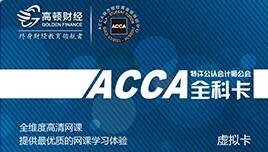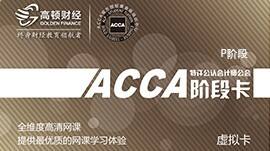2010年12月ACCA考试考官报告(F8)
General Comments
The examination consisted of five compulsory questions.Section A contained question 1 for 30 marks and question 2 for 10 marks.Section B comprised three further questions of 20 marks each.
The majority of candidates completed all five questions;however there was some evidence of time pressure as a significant minority of candidates did not attempt all questions.This seemed to mainly occur for question 5 or for the questions candidates found challenging,which are listed below.In addition a significant minority answered question 1 last and their answers were often incomplete.As question 1 is the case study and represents 30 of the available marks,leaving this question until last can be a risky strategy,as many answers presented were incomplete or appeared rushed.
Candidates performed particularly well on questions 1b,2c,3ci and 4bi.The questions candidates found most challenging were questions 1a,2b,3a,3cii and 5b.This was mainly due to a combination of failing to read the question requirement carefully and insufficient knowledge.A number of these areas were new to the F8 study guide in 2010 and hence as new topic areas should have been prioritised by candidates.
A number of common issues arose in some candidate’s answers:
•Failing to read the question requirement clearly and therefore providing irrelevant answers which scored few if any marks
•Providing more than the required number of points
•Illegible handwriting and poor layout of answers.
Specific Comments
Question One
This 30-mark question was based on a retailer of ladies clothing and accessories,Greystone Co,and tested candidates’ knowledge of internal control deficiencies,trade payables and internal audit.
Part (a) for 5 marks required candidates to explain examples of matters that the auditor should consider in determining whether an internal control deficiency was significant.
This part of the question was unrelated to the Greystone Co scenario and hence tested candidates’ knowledge as opposed to application skills.This question related to ISA 265 Communicating Deficiencies in Internal Control to those Charged with Governance and Management,which is a new ISA and new to the F8 study guide for 2010.
Most candidates performed inadequately on this part of the question.The main reason for this is that candidates failed to read the question properly or did not understand what the requirement entailed.The question asked for matters which would mean internal control deficiencies were significant enough to warrant reporting to those charged with governance.The question was not asking for examples of significant internal control deficiencies,however this is what a majority of candidates gave.Many answers included a long list of control deficiencies such as “inadequate segregation of duties” this failed to score marks as it was not answering the question.
It was apparent that many candidates had not studied the area of significant control deficiencies,and as there is now an ISA dedicated to this area,this was unsatisfactory.
Part (b) for 14 marks required a report to management which identified and explained four deficiencies,implications and recommendations for the purchasing system of Greystone Co.A covering letter was required and there were 2 presentation marks available.
This part of the question was answered well by the vast majority of candidates with some scoring full marks.The scenario was quite detailed and hence there were many possible deficiencies which could gain credit.Where candidates did not score well this was mainly due to a failure to explain the deficiency and/or the implication in sufficient detail.Some candidates simply listed the information from the scenario such as “purchase invoices are manually matched to GRNs” and then failed to explain the implication of this for Greystone Co.
A significant minority also failed to score marks because they provided deficiencies which were unrelated to the purchasing system,such as “internal audit’s only role is to perform inventory counts.” This was outside the scope of the question requirement and hence did not gain credit.Candidates are once again reminded that they must read the question requirements carefully.
Many candidates failed to score the full 2 marks available for presentation as they did not produce a covering letter.A significant minority just gave the deficiencies,implications and recommendations without any letter at all;this may be due to a failure to read the question properly.Also even when a letter was produced this was often not completed.
Candidates would provide the letterhead and introductory paragraph,the detail of the deficiencies,implications and recommendations,but then they would fail to include a concluding paragraph and letter sign off which would have earned a further 1 mark.In addition some candidates produced a memo rather than a letter.In general,where candidates adopted a columnar approach to their answer they tended to score well.
The question asked for four deficiencies,implications and recommendations,however many candidates provided much more than the required four points.It was not uncommon to see answers which had six or seven points.Whilst it is understandable that candidates wish to ensure that they gain credit for four relevant points,this approach can lead to time pressure and subsequent questions can suffer.
Part (c) for 5 marks required substantive procedures the auditor should perform on year-end trade payables.This was answered satisfactorily for many candidates.The most common mistake made by some candidates was to confuse payables and purchases and hence provide substantive tests for purchases such as “agree purchase invoices to goods received notes”.As there was no reference to year-end payables then this test would not have scored any marks.A minority provided tests of controls as well as substantive procedures and again these would not have scored any marks.
The requirement verb was to “describe” therefore sufficient detail was required to score the 1 mark available per test.Candidates are reminded that substantive procedures is a core topic area and they must be able to produce relevant detailed procedures.Answers such as “discuss with management to confirm ownership of payables” is far too vague to gain credit as there is no explanation of what would be discussed and also how such a discussion could even confirm ownership.
Part (d) for 5 marks required additional procedures the internal auditors of Greystone Co could perform;this was in addition to their current role of performing regular inventory counts.This required candidates to use their knowledge of internal audit assignments and apply it to a retailer scenario.On the whole candidates performed satisfactorily on this question.Many were able to identify assignments such as value for money audits,reviewing internal controls,assisting the external auditors and other operational internal audits.However some candidates restricted their answers to assignments the auditors would perform in light of the control deficiencies identified in part (b) of their answer.This meant that their answers lacked the sufficient breadth of points required to score well.
Question Two
This 10-mark question covered the topics of true and fair concept,International Standards on Auditing (ISAs) and audit documentation.
Part (a) for 4 marks required candidates to explain the true and fair concept.Candidates’ performance was mixed on this question.Candidates clearly are aware of the concept but struggled to explain it with sufficient clarity.Also many candidates failed to score full marks as they did not make a sufficient number of points for 4 marks.
A common answer was to describe true as beingtruthfuland to explain fair in relation tofairness.This does not answer the question.In addition a minority also confused their explanations between true and fair,for example,statingtrue means unbiased”.Also a significant minority,having gained credit for stating that true and fair means that there are no material misstatements in the financial statements,then went onto a detailed description of materiality which was not required.
Part (b) for 2 marks required an explanation of the status of ISAs.Candidates performed inadequately on this question.Many candidates did not seem to understand what was required and were confused by the wordstatus”.However this requirement is taken from the study guide and relates to the authority of ISAs,what types of assignments they apply to,their content and also how they interact with other legislation.
Part (c) for 4 marks required four benefits of documenting audit work.This question was answered well by most candidates.In addition the verb ofstatewas addressed by most candidates and answers were generally succinct.Where candidates did not score full marks this tended to be because they repeated points or because they gave points which related to the benefits of audit planning rather than the benefits of documenting audit work.
Question Three
This 20-mark question was based on Redsmith Co which produced printers.The question tested the areas of risk identification,planning and acceptance of new audit engagements.
Part (a) for 3 marks required the process an auditor would undertake for an assessment of whether the preconditions for an audit were present.This is a new topic from the revised ISA 210 Agreeing the Terms of Audit Engagements.
A large number of candidates did not attempt this question,and where it was attempted it was inadequately answered.Most candidates who provided an answer clearly did not know what the preconditions were and therefore proceeded to write down anything they knew about new audit engagements.Most provided answers which covered ethical considerations for new engagements such as contacting the outgoing auditors,or ensuring that they had an adequately trained audit team and other client screening procedures,also many covered the contents of an engagement letter.
It was fairly apparent from the answers provided that many candidates had simply not studied the new syllabus area of preconditions and hence were unable to score any marks at all.In addition many candidates wrote at considerable length for a 3 mark requirement.This put them under significant time pressure for later questions.Candidates must note the total number of available marks and provide an answer in line with this.
Part (b) for 2 marks required 4 matters the auditor should consider in obtaining an understanding of the entity.This was unrelated to the scenario and was a knowledge based question.In general candidates performed satisfactorily.Where candidates did not score full marks this was because they focused on such areas as people they would speak to,or procedures to obtain information such asreviewing the company’s website”.They should instead have focused on the areas/matters of the company that the auditor wished to gain an understanding on,such as its industry,regulatory framework or customer base.
Part (c) for 15 marks required a calculation of 5 ratios each for 2 years and an explanation of the related audit risks and responses.The ratios requirement was answered well by the majority of candidates.However there were a significant minority who did not have a calculator in the exam and hence were unable to calculate any ratios,they failed to score any of the available 5 marks.Also some candidates were unable to calculate any relevant ratios,instead just calculating percentage increases or producing duplicating ratios such as gross margin as well as cost of sales as percentage of revenue.In addition a significant minority confused the calculation of inventory days using inventory divided by revenue rather than cost of sales.Candidates are reminded that as part of an analytical review,going concern or audit risk question they must be able to calculate and then evaluate relevant ratios.
The question then required audit risks and responses for 10 of the 15 marks.Many candidates performed inadequately on this part of the question.
As stated in previous examiner’s reports,audit risk is a key element of the Audit & Assurance syllabus and candidates must understand audit risk.
The main area where candidates lost marks is that they did not actually understand what audit risk relates to.Hence they provided answers which considered the risks the business would face or ‘business risks,’ which are outside the scope of the syllabus.Audit risks must be related to the risk arising in the audit of the financial statements.If candidates did not do this then they would have struggled to pass this part of the question as there were no marks available for business risks.
In addition many candidates chose to provide an interpretation of accounts and the ratios calculated rather than an assessment of audit risk.Comments such asrevenue has increased by 28% this could be as a result of the bonus scheme introducedwould not have scored any marks as there was no identification of the audit risk,which is overstatement of revenue.
Even if the audit risks were explained many candidates then failed to provide a relevant response to the audit risk,most chose to give a response that management would adopt rather than the auditor.For example,in relation to the risk of valuation of receivables,as Redsmith Co had extended their credit terms to customers,many candidates suggested that customers should not be accepted without better credit checks,or offering an early settlement discount to encourage customers to pay quicker.These are not responses that the auditor would adopt,as they would be focused on testing valuation through after date cash receipts or reviewing the aged receivables ledger.Also some responses were too vague such asincrease substantive testingwithout making it clear how,or in what area,this would be addressed.
Future candidates must take note; audit risk is and will continue to be an important element of the syllabus and must be understood.
Question Four
This 20-mark question was based on Bluesberry hospital and tested candidates’ knowledge of value for money,strengths of an operating environment and substantive procedures for property,plant and equipment.
Part (a) for 4 marks required an explanation of the purpose of a value for money audit.Candidates performed satisfactorily on this part of the question.Many candidates were able to score three of the available four marks by defining the 3Es of economy,efficiency and effectiveness.However some confused their explanations giving an explanation of effectiveness for efficiency.The final mark for a general explanation of what a value for money audit actually means was often not considered by candidates.In addition a significant minority of candidates misunderstood the question and referred to ensuring value for money for an external audit.
Part (b) for 10 marks required identification and explanation of four strengths within the hospital’s operating environment and a description of an improvement to provide best value for money for the hospital.Candidates performed well in the explanations of the strengths within Bluesberry with many scoring full marks.The scenario contained a number of strengths and hence it was relatively straightforward for candidates to identify four.Where candidates failed to score well this was due to a failure to explain their strengths.The requirement was to “identify and explain”,where a strength was identified then ½ mark was available,another 1 mark was available for a clear explanation of each strength.In addition a significant minority misread the question requirement and identified weaknesses rather than strengths.
The second part of this question required improvements to the strengths identified.Performance on this question was adequate.The majority of candidates attempted this part of the question,and were able to identify a few relevant points.However answers were often too vague or unrealistic.
A significant number of candidates presented their answers to part b(i) and (ii) in a columnar format and this seemed to help them to produce concise and relevant answers.
Part (c) for 6 marks required two substantive procedures each to confirm the valuation,completeness,and rights and obligations of property,plant and equipment of Bluesberry.Candidates’ performance was mixed,with many confusing their assertions.It was common to have existence tests provided for completeness.In addition too many answers were vague,candidates are still giving substantive procedures such as “check the invoices.” This does not score any marks as there is no explanation of what we are checking the invoices for.Also a common response was to “check the title deeds” with no explanation of what in the deeds we were checking or why.
Question Five
This 20-mark question was based on a manufacturing company Greenfields Co and tested candidates’ knowledge of accounting estimates,written representations and audit reports.
Part (a) for 5 marks required audit procedures for accounting estimates.This question was answered satisfactorily.The question was not specifically related to the two issues in the scenario and so candidates who considered general procedures relevant for any estimate such as legal provisions or depreciation scored well.Many also gave examples of different estimates when providing their procedures.Those candidates who only considered the two issues of the receivable balance and the warranty provision often failed to generate a sufficient number of points.
Part (b) for 10 marks required a discussion of the appropriateness of written representations and additional procedures to be performed at the final review stage for the two issues of the receivable balance and the warranty provision.A significant minority did not attempt this question,and where it was attempted candidates’ performance was unsatisfactory.
In the first part of the question on written representations many candidates wrote at length about written representations in general and whether they were an acceptable form of audit evidence,these answers did gain credit as they were too general.The question asked specifically about two situations and these needed to be addressed.In addition many candidates did not seem to understand the difference between the two situations in that for the receivable balance alternative evidence should exist,for example,through a receivables circularisation,but because of the nature of the warranty provision alternative evidence was not generally available.Also many candidates seemed to believe that a written representation was necessary as the balances were material.This displays a lack of understanding of why written representations are used.
The second part of the question considered additional procedures that should now be performed for these two issues.Again performance was unsatisfactory,it was clear from the scenario that the audit fieldwork had already been performed as it was stated that the manager was performing a final review of the audit.Therefore procedures needed to reflect that the main work on testing receivables and provisions had already been undertaken and at this stage it was just a case of updating this knowledge.For receivables many candidates provided tests such as “agree the receivable balance to sales invoices and goods despatch notes” this did not gain any marks as is not a procedure undertaken as part of a final review.
In addition the scenario clearly stated that management would not allow the auditors to circularise the receivable balance owing from Yellowmix.However many candidates ignored this and still stated as a procedure that the balance should be circularised.It is not possible to send a circularisation without management’s permission.This demonstrated either a failure to read the question properly or a lack of understanding of a circularisation.
For the warranty provision candidates performed marginally better at producing additional procedures.However it was still common to see answers which recommended that the auditor recalculate the warranty provision and test the assumptions,this was despite the fact that the scenario stated that this had already been undertaken.
Part (c) for 5 marks required the steps the auditor should now undertake and the impact on the audit report in relation to the warranty provision.Candidates’ performance was satisfactory with many scoring well for the audit report impact.However ,many candidates provided a scatter gun approach of suggesting every possible audit report implication.
Many used terms such as “except for”,modified” or “qualified” but the accompanying sentences demonstrated that candidates did not actually understand what these terms meant.Also an emphasis of matter paragraph was suggested by a significant proportion of candidates,this demonstrates a fundamental lack of understanding of emphasis of matter paragraphs and audit reports.

相关阅读
2012年12月ACCA考试P4考试考官报告2013/06/19
2012年12月ACCA考试P3考试考官报告2013/06/19
2012年12月ACCA考试P2考试考官报告2013/06/19

















